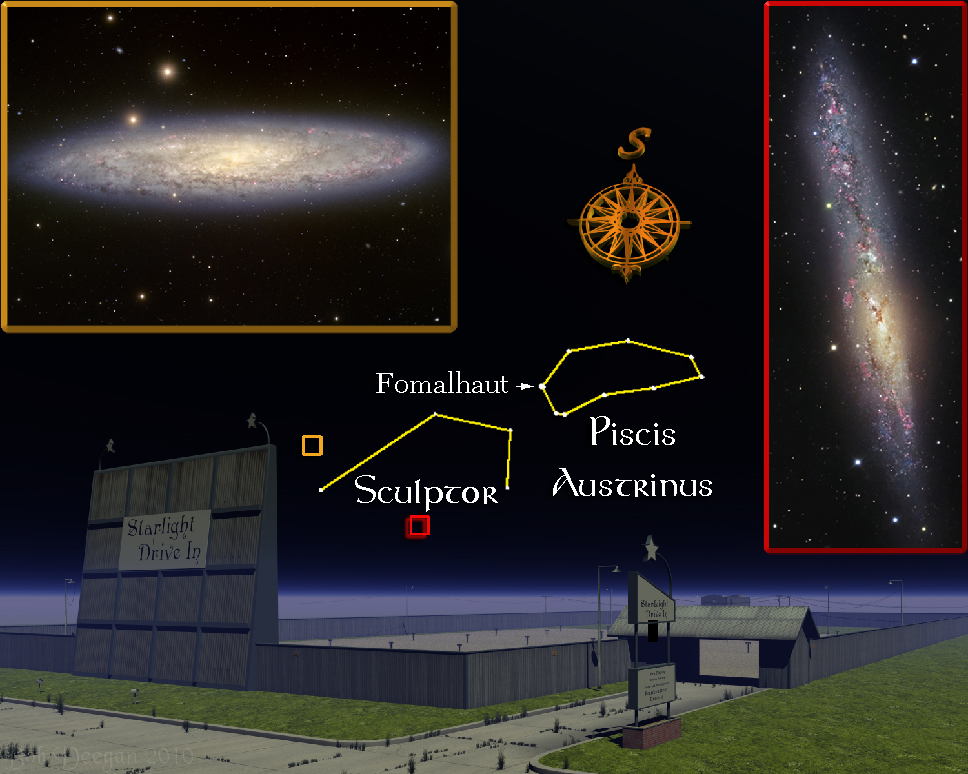
For the week including September 17, 2010

HORIZON STARS
This week we’ll take a look at two constellations that lie close to the southern horizon. A good time to look for them is around ten in the evening. Once you get to know some of their star markings, they are fairly easy to distinguish and are good additions to the collections of amateur star watchers.
Piscis Austrinus, the Southern Fish: This is one of the constellations that appeared on Ptolemy’s ancient star charts. Piscis Austrinus is marked by Fomalhaut, Arabic for the “Mouth of the Fish”. Fomalhaut sits by itself in a region of sky that is relatively devoid of highly visible stars. As the seventeenth brightest star in the sky, Fomalhaut is one of the southernmost bright stars we can see from our latitudes. In 1983, the Infrared Astronomical Satellite (IRAS) detected an enormous cloud of dust and gases encircling the star. Encompassing an area four times larger than our solar system, this disk is an area that astronomers had hoped to find planets in the early stages of formation. Their hypothesis was confirmed by the Hubble Space Telescope in 2008 when a planet three times the size of Jupiter, Fomalhaut b, was discovered.
Sculptor, the Sculptor’s Workshop: Just to the left of Fomalhaut, this constellation is not very prominent but contains some of my favorite astronomical objects. As the accompanying photographs show, each of them has very distinctive features. These galaxies are members of the association known as the Sculptor Group of galaxies. This galaxy group is one of the nearest to the collection of some thirty galaxies known as the Local Group to which our Milky Way belongs.
NGC 253, shown in the National Optical Astronomy Observatory photograph at upper left, is also known as the Silver Coin Galaxy. Even though it lies some 10 million light years away, this is one of the brightest galaxies visible from Earth. Like the Milky Way, NGC 253 has a spiral structure, but most of this is hidden from us because the galaxy is oriented almost edge-on to our view. One of the reasons that NGC 253 is so bright is because of the furious rate of star formation near its core. This region, some 1,000 light years across, is densely packed with new stars, leading astronomers to classify the Silver Coin as a “starburst” galaxy. The brilliance of the Silver Coin makes it very easy to find with a set of binoculars, but a telescope will reveal some of its internal structure which includes a wonderful mottling of dark dust lanes.
In the photograph by Don Goldman at upper right is NGC 55, another bright galaxy that would be a heavy favorite of stargazers if it were higher above the southern horizon. Its strange lop-sided structure is most probably the result of a collision with another galaxy. On hazy nights that lessen the acuity of backyard telescopes, the elongated portion of NGC 55 might appear as a separate object.
Unless otherwise indicated, all content of this web site is the copyright of Robert Deegan and all rights are reserved.
For more information, or to comment, please contact: Bob@NightSkies.org